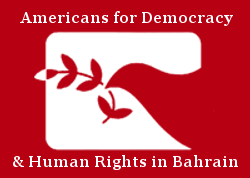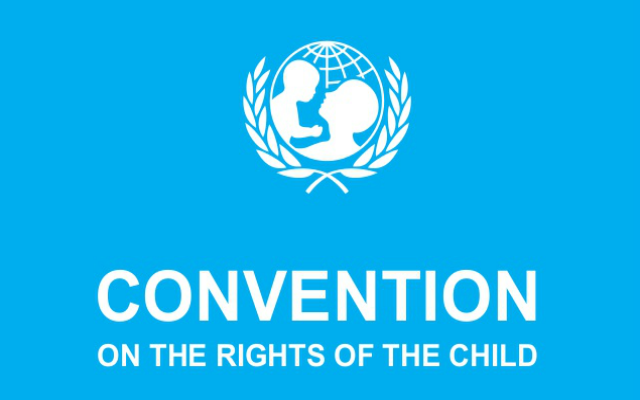Today, on occasion of the Committee on the Rights of the Child’s (CRC) Day of General Discussion on Children and the Environment, ADHRB highlights our concern over the impact of environmental degradation in Bahrain on the lives of local populations, including children.
Children’s Rights and the Environment: A Case Study on Bahrain
On 13 February 1992, Bahrain acceded to the Convention on the Rights of the Child (CRC). By agreeing to all provisions of the treaty, the Kingdom of Bahrain has committed to preserving environmental standards that ensure the long-term health of children. Specifically, Article 24 of the CRC stipulates that governments must consider the harmful effects of environmental pollution on children’s health.
The Bahraini government has failed to uphold this key provision. Industrial development on the coast of Bahrain has made a significant impact on the area’s wildlife and marine environment, as well as on the livelihoods of local communities. In addition, authorities’ indiscriminate use of tear gas to suppress peaceful demonstrations, which include minors, has the potential to contribute to deteriorating air quality and chronic health for children in the country.
Land reclamation
In the 1950s, Bahrain began land reclamation projects to increase land mass and expand the island’s shorelines. The government’s ongoing land reclamation projects have severely damaged marine life in Bahrain. The residents of coastline villages, including in the village of Ma’ameer, rely heavily on the fishing industry. Many Bahrainis in these fishing villages are unable to continue their traditional occupations due to the detrimental effect on aquatic biodiversity.
As a result, Ma’ameer has one of the highest levels of poverty and unemployment in Bahrain. Residents struggle to support their families, launching them into a cycle of poverty that often results in children’s malnutrition. Bahrain has neglected to provide basic public services to assist impoverished children living in the unsafe, unhygienic conditions left by governmental land reclamation projects.
Air pollution
In a study of 3000 cities worldwide, the World Health Organisation (WHO) listed four Bahraini cities in the top 25 most polluted areas in its global urban air quality database. The children living in Hamad Town, which ranks at number 11 on WHO’s list, Ma’ameer, Ras Hayan, and Nabih Saleh are all exposed to air quality levels that exceed international safety standards.
Only a few meters separate the Imam Ali Primary School for Boys from Ma’ameer’s factories. 550 students attend the school. Students’ parents have reported an increase in respiratory and skin diseases among children. They relate this to residents’ close proximity to factory toxicants. In April 2016, 14-year-old Fadhel Adhan died after 13 years of battling Prader-Willi syndrome, a disease that may have been caused by exposure to pollution.
Sea pollution
There are major concerns regarding the factory waste along the coast of Ma’ameer. Several factories dump untreated chemical waste into the sea. Sea pollution decreases the sea’s oxygen levels, killing further marine life. The Bahraini government is neglecting to rectify the damage done by these factories. Even when clean-ups of the area take place, they are performed in a hazardous and negligent manner. Some of the cleaning companies have illegally buried waste, classified as dangerous chemicals, at the company’s site.
In the village of Ma’ameer, 130 factories have been built along the coast. Ma’ameer’s oil refinery is only one kilometer away from schools and a residential area, where the residents are constantly exposed to toxic gases and chemical waste. In 2014, large oil spills occurred off the coast of Ma’ameer and remained in the sea for over four months. This contributed to the destruction of marine life, the main source of income and personal sustenance for families in the area.
The affected populations in Ma’ameer and surrounding coastline villages are largely comprised of impoverished, Shia families. The government has been accused of neglecting the poor economic conditions and environmental safety in the area because of discrimination against Shia Muslims in Bahrain.
Use of tear gas
Disparities between Shia and Sunni Bahraini citizens are amplified by the Sunni-led government’s targeting of Shia political dissidents. Studies into Bahrain’s use of tear gas find that law enforcement officials have used toxic chemical agents to assail Shia-majority communities, where protests against the monarchy often occur.
Security forces insist that the tear gas they use is a benign crowd control tool. However, there is extensive documentation on the health effects of tear gas when used indiscriminately against civil society. Excessive exposure to these chemical agents can lead to pulmonary damage, miscarriage, and death.
Bahrain Center for Human Rights (BCHR) has been documenting individuals who died by asphyxiation after tear gas canisters were fired into their houses and cars. The list includes a 6-day-old baby, whose home was tear gassed during the 2011 Bahraini uprisings. Furthermore, BCHR and other organizations counted an increased number of reported of miscarriages at the height of the uprisings, citing tear gas as a primary cause.
There is also evidence that chemicals in tear gas can linger in the environment for more than 60 days, contributing to the environmental impact of air pollution. However, Bahrain has not disclosed the chemicals that it releases into the environment, preventing study of the link between environmental damage caused by tear gas and human health.
Recommendations to the Government of Bahrain:
- Develop programs and services to assist impoverished children and families living in the unsafe, unhygienic conditions left by governmental land reclamation projects.
- Fulfill duties to safely and thoroughly rectify sea and air pollution, using procedures that are in accordance with international environmental protection standards.
- End all attacks on civilians, including tear gas attacks on civilians and homes.
- Disclose information about the varieties of toxic chemical agents used by law enforcement in Bahrain in order to drive toxicological research on the health outcomes of specific toxicant exposure.
- Allow scientists, health professionals, and epidemiologists to conduct critical toxicological and survey research on the use and effects of tear gas in Bahrain.
Recommendations to the Committee on the Rights of the Child:
- Support further scientific research into the health effects of tear gas, including research on the possible connection to miscarriage and/or genetic disorders and long-term environmental and health outcomes.
- Investigate Bahrain’s international treaty obligations to prevent and remove environmental pollution, as well as implement programs to assist individuals who suffer disproportionately from environmental damage.
- Review international, regional, national, and local guidelines on tear gas use and ensure that Bahrain follow the parameters of the UN Guidelines on the Use of Force, including mechanisms for accountability for misuse.
To see a PDF of this report, please click here.





